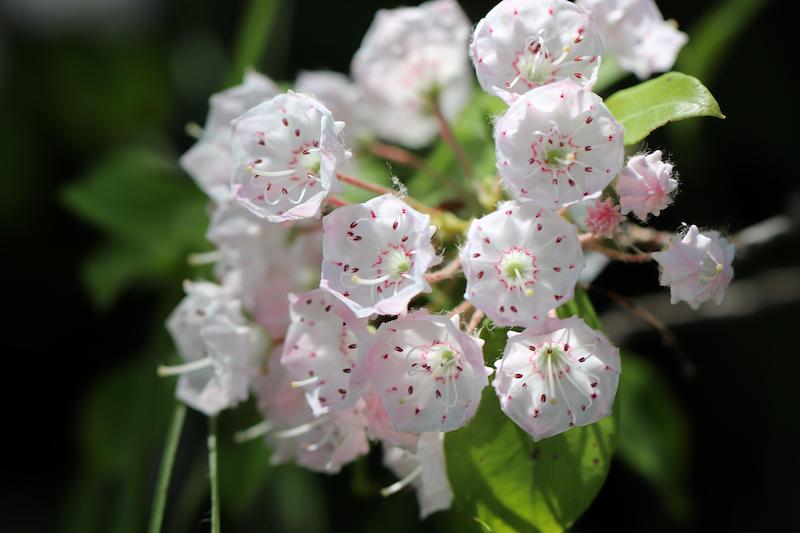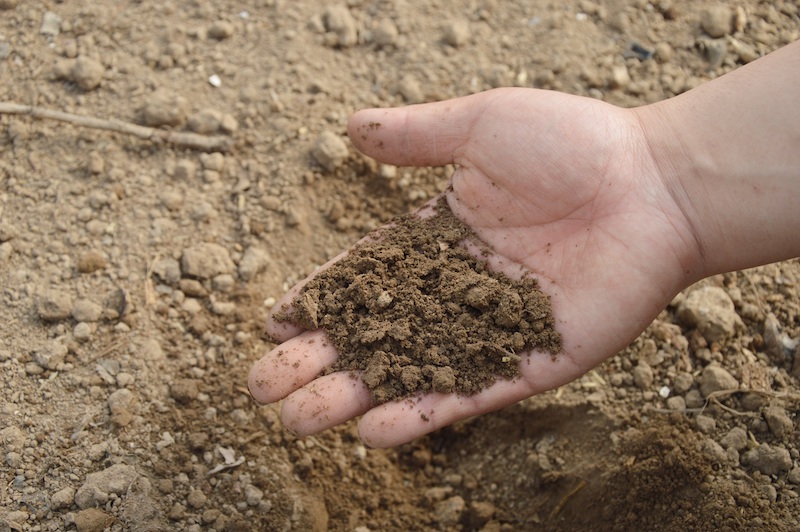Native plants, such as Mountain Laurel, do not often need extra fertilizing. They have adapted to take all of the nutrients they need from native soil. Mature Mountain Laurel may need a boost of extra nutrition when it is planted in soil that is too neutral or alkaline. This light feeding will help the leaves to stay dark green and the growth to be robust. Newly planted shrubs should not be fertilized. Most times there is still plenty of fertilizer still in the soil that they were planted into from the nursery.

How to Fertilize Mountain Laurel
Planting Mountain Laurel in soil that is 6.0 or less on the pH scale will mean less need for fertilizing on a regular schedule. An easy way to tell if supplemental fertilizing is needed is to inspect the leaves for yellowing between the leaf veins. This is called leaf chlorosis and is a sign that broadleaf evergreens like Mountain Laurel need a boost of nutrition. Most often the older leaves at the bottom of the shrub are first affected by yellowing. Plants will protect the youngest growth when there is a lack of nutrients, sloughing off any mature leaves it can. Overwatering shrubs either in a container or the ground will leach away important nutrients that need to be added back to the soil. In locations that receive high amounts of rain during the winter, the soil may be com depleted over time, in which case a regular application of slow-release food for acid-loving plants will be needed in the spring.

Best Time to Fertilize Mountain Laurel
Early spring as the first buds are beginning to break is the time to apply a slow release, granular fertilizer for Mountain Laurel. A granular feed will help to provide nutrients all summer, so only one application is needed. Fertilizing after blooming has finished will only produce dense leaf growth and not another flush of flowers
Best Fertilizer for Mountain Laurel
A fertilizer formulated for acid soil-loving plants is the best choice for Mountain Laurel. This type of formulation will have the proper ratio of N-P-K (Nitrogen, Phosphorus, Potassium). Many times the N and the P numbers will be higher. This means that the fertilizer will support leaf growth and flower budding. A slow release, organic fertilizer will deliver the correct nutrients for a long period of time. Liquid feeds tend to be more quick acting and give an instant jolt of food that the plant uses quickly, but the benefits fade very quickly and another application will be required. Using a liquid fertilizer that has lower N-P-K numbers, such as seaweed, kelp or fish emulsion, is tolerated better by most plants than a synthetic liquid fertilizer that contains high numbers.
Mountain Laurel Fertilizing Tips
- Slow-release fertilizer only needs an application once a year
- Only use fertilizer if shrub is showing signs of Leaf Chlorosis or failing to flower
- Water in granular fertilizers well around the root zone of the shrub
- Avoid fertilizer contact with leaves, as it may burn the leaves
Warnings
-Always wear protective gloves and a face mask when handling chemical fertilizers.
-Closely follow all directions and storage guidelines that are on the fertilizer label.
 |
Author Robbin Small - Published 6-29-2022 |
